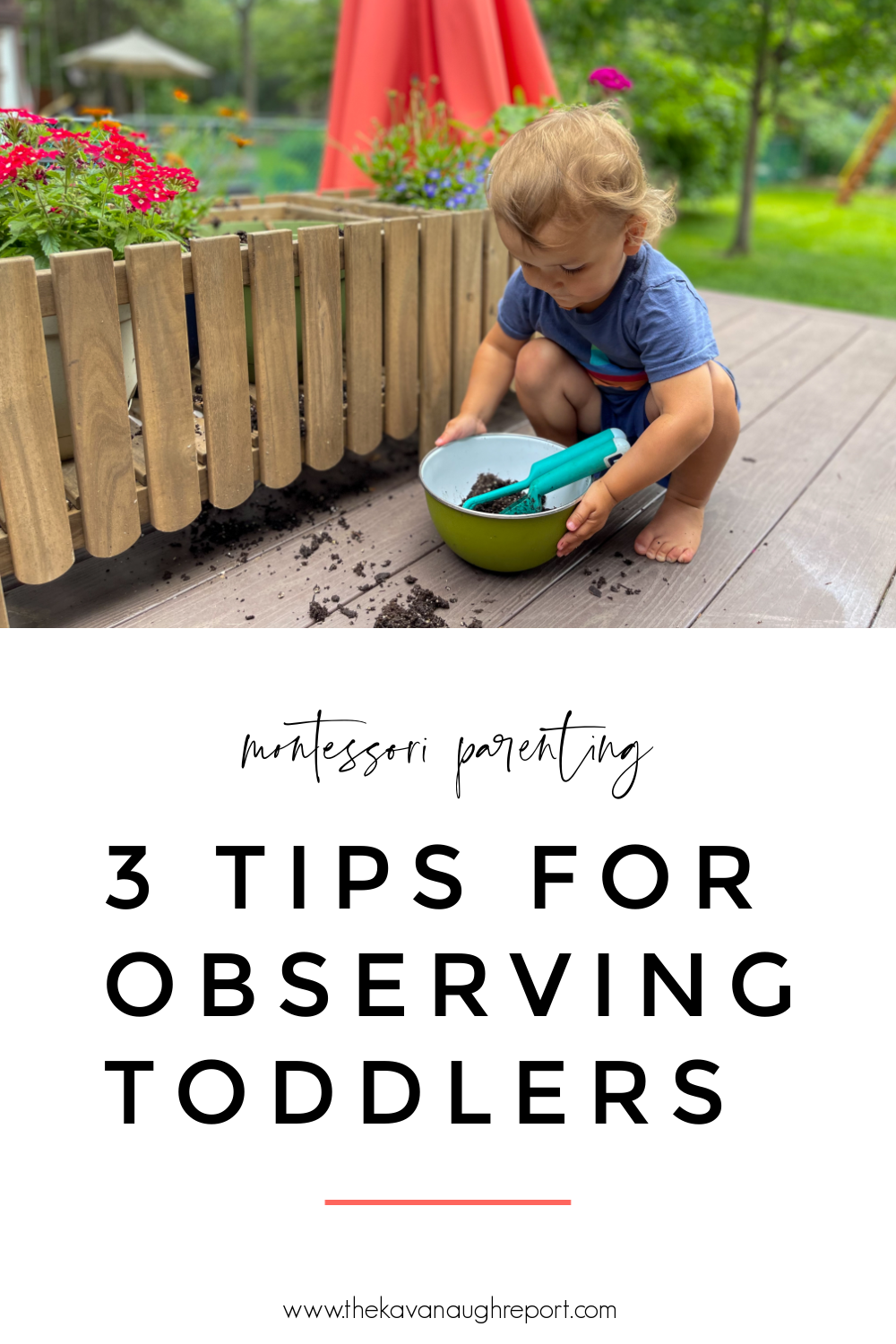Observation is one of our most powerful tools as a Montessori parent. It is through observation that we learn what our children need, where their interests lie, and how well our environments are meeting their needs. Observation answers so many of the questions we have as parents and caregivers. One of my favorite things to ask myself lately has been, "but, why?" This question truly can only be answered through observation.
"If a system of education is to rise from a study of the individual student, it will have to come about in this way, that is, from the observations of free children who are watched and studied but not repressed." Maria Montessori, Discovery of the Child
But not all observation is created equally. There's watching, then there's observing. Watching your child move through their day is a part of parenting - every parent needs to make sure their child is safe as they move about their day. But, that's not necessarily observation. Observation is different. It's a little deeper, and our goals are different.
3 Tips for Observing Montessori Toddlers
Here are a few things to keep in mind when observing:
- Keep it objective - When you're observing don't add your value judgment to your observations. If it helps write down what you are seeing - not what you think it means, or how you would change it - first. Really really just watch them. Go back after the observation and think about what it means, don't try to combine those two steps together.
- Keep a Distance - In her book Discovery of the Child, Maria Montessori said, "There is only one basis for observation: the children must be free to express themselves and thus reveal those needs and attitudes which would otherwise remain hidden or repressed in an environment that did not permit them to act spontaneously." For me, this means that observations are only valuable when children can act as they truly are, and not act for some other motivation.For toddlers, I think it is particularly hard to see them act spontaneously when we hover. They are acutely aware of our presence, want to interact with us and are especially concerned with what we are doing. So keeping ourselves a little bit back during our observations can be helpful. Don't sit right next to them and expect them to just act as they would with a bit more space.
- Know when to Step In - With toddlers there are going to be times when you are observing and something goes awry. The toddler might do something dangerous, skip a step, drop something, whatever. There are going to be times when you have to step in and immediately correct the situation. And, there are times when you have to sit back watch those mistakes and not interfere. It's hard to know where that exact balance is. And that balance will change depending on the child and the situation.For example, in these pictures, Teddy was scooping dirt from an empty pot on our deck. As I watched he started using the shovel to scoop the dirt onto the patio below the deck. He was leaning so far over the flower boxes he was definitely going to fall. So I quickly just stepped into provide a bowl to scoop into, then stepped back out of the way of his work. It was a small in the moment adjustment that made a big difference.Other times, there might be adjustments that need to be made but those could be made by changing the environment, presenting a new work, or some other change outside of the exact moment.
There is so much joy in observing your toddler at work. If you haven't gotten into the practice of observation, try it today!





